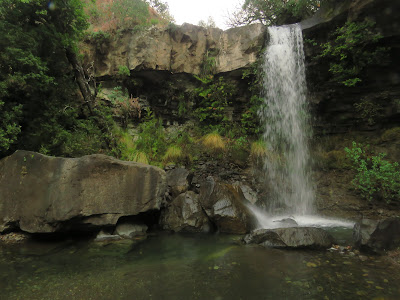“A long time ago, we the Bushmen, roamed these mountains, masters of the unpredictable ways of nature. We were nomads then, moving with the great herds of game and the changing of seasons. When the animals migrated, we followed, leaving no houses or roads to mark our presence here. All we left behind was our story painted on the rock, in the shelters, the story of sacred animals and our journeys to the spirit world. These mountains gave us shelter and the herds of antelope gave sustenance and meaning to our lives”
UNKNOWN
Ndedema Gorge
Drakensberg
The Ndedema Gorge is within easy hiking distance from the Didima Rest Camp in the Cathedral Peak area. It is a place awash with history and is also stunningly beautiful.
The tributaries of the upper Mlambonja River flow through deep gorges, and in these are numerous caves and rock shelters formerly occupied by Bushmen. There are about 150 separate Bushman rock art galleries in the caves, which are largely concentrated in Ndedema Gorge.
The gorge takes its name from the river flowing through it, and the river takes its name from the Drakensberg peak on which it has its source. Ndedema is a corruption of Ndidima, which means ‘a place of reverberation’, and the name derives from the rumblings and tremors of powerful thunderstorms.
The gorge was a perfect home for Bushmen from remote times. It is deep and well protected from harsh weather, and has ample fresh water in a clear river with a succession of pools for swimming. Tall forest trees grow all the way down the gorge, providing shade.
The grassy foothills of the Drakensberg attracted vast herds of antelope, notably eland, and the Bushmen hunters lived well. For a considerable period they were secure, without the threat of invasion by hostile peoples.
In the Ndedema Gorge there are 17 rock shelters and caves containing nearly 4000 separate rock paintings. The Bushmen had leisure and security, and their delight in art is evident in the humor and beauty of their work. The Ndedema Gorge is one of the world’s finest treasures of rock art and nowhere did prehistoric man attain a higher standard of work.
Among the caves, perhaps the most spectacular is the one called by the Ngwane tribespeople Sebayeni (‘the kraal’), because it was used by herdsman as a shelter for livestock.
In this cave there are 1 146 paintings and they reveal Bushman art at its best. It was in the Ndedema Gorge that Harold and Shirley Ann Pager lived from 1965 to 1969 while studying the paintings and skillfully restoring in photographs their fading beauty by the ingenuous but laborious technique of photographing them in black and white, making prints of the same size as the originals, and then coloring the prints in the original colors used by the artists. The result of this dedicated labor was the publication of the book Ndedema, now a standards work on the subject, reproducing the great majority of the paintings.
A path leads through the gorge from the Cathedral Peak Hotel and Didima Rest Camp area to the valley of the Mhlwazini River. In this river valley is another cave, the Elands Cave, containing 1 639 stunning paintings.
It is very sad that you find hikers taking all the effort to hike to these beautiful caves, and once there, are then intent on destroying this ancient art and history. Look, take pictures, don’t touch and leave them as you find them!
We as hikers, explorers, and adventurers have the absolute duty to respect and protect our Wildernesses. Nobody else will do it for us. Take ownership!
The End.
Safe Hiking.
References and Acknowledgements
Photos Bushmen Art: Readers Digest – Illustrated Guide to South Africa
Source: Readers Digest – Illustrated Guide to South Africa














